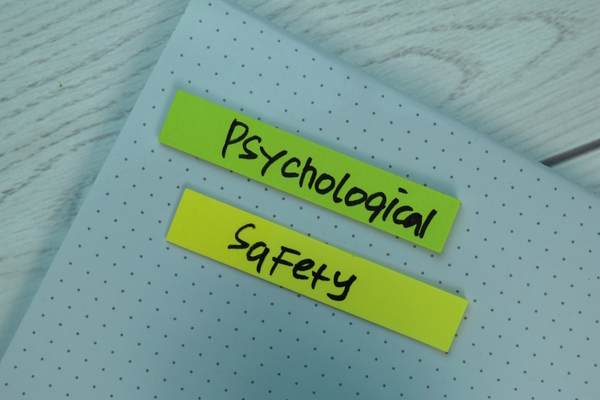High-performing executive teams
Mark Eastham at Avantia Group describes how CEOs can build and lead executive teams that drive success

The traditional model of executive leadership is undergoing significant transformation with disruptions driven by new technologies and AI, changing customer expectations, and heightened market volatility. This is forcing organisations to rethink what makes a truly high-performing leadership team.
Increasingly, success hinges not just on individual skill or technical expertise but on the collective ability of executive teams to collaborate seamlessly, embrace innovation, and respond with agility to changing circumstances. In fact, organisations that cultivate high-functioning executive teams are better positioned to outperform their peers in both growth trajectories and resilience during periods of uncertainty.
As business challenges become more complex, CEOs must build an environment where rigorous hiring, aligned incentives, continuous feedback, and shared accountability are integral to both day-to-day operations and long-term strategy.
Even in traditionally rigid sectors such as insurance, these qualities are now critical for driving growth, innovation and customer focus.
Harnessing c-suite collaboration
I believe that high performance begins with embedding technical expertise, from data engineering to product and commercial insights, within every strategic pillar of the organisation. This approach creates natural touchpoints for collaboration and knowledge exchange.
When technical and commercial leaders work closely together, everyone gains a richer understanding of what their colleagues do. For example, the commercial leads learn firsthand how technical realities shape product timelines, while the technical leaders come to understand the intricacies of strategic pricing and market dynamics. This cross-pollination creates both stronger communication and collective decision-making. Implementing an OKR framework has been a gamechanger for us, with our executive leadership team agreeing company-wide objectives quarterly – we take the time to discuss and debate, and having that agreed quarterly focus means collaboration naturally follows, as we’re all aligned on our overarching strategic priorities from the get go.
With greater understanding comes sharper, more cohesive prioritisation too. Trade-offs and strategic direction don’t get stuck in departmental silos; instead, leaders can align on those key objectives, factoring in both commercial priorities and technical limitations. The result is a leadership team capable of moving quickly with well-grounded confidence.
Aligning technical and strategic leadership
Innovation is also encouraged by building a leadership team equipped with both technical experience and entrepreneurial energy. Many of our leaders have hands-on coding or operational backgrounds so they’re not afraid to roll up their sleeves and get into the detail.
Having an open, technology-first culture naturally attracts bold thinkers, and combining that with a culture of collaboration means we’re able to innovate at speed – for example, our new AI fraud detection agent, Holmes, was designed and built by a cross-functional team of operators and engineers during an innovation hack day.
Integrating people with varied backgrounds and expertise generates fresh ideas and new ways of thinking. It’s a major drawcard for ambitious professionals both from within the insurance industry and from outside it – the common theme being that they are eager to work with the latest technologies on challenging, cross-functional initiatives - whether that means deploying cutting-edge data tools in Python or rethinking the foundations of the industry itself.
Building and leading high-performance executive teams
Assembling a high-performing top team is both an art and a discipline. Five guiding principles have shaped my approach:
1. Hire thoughtfully and rigorously
For executive roles, don’t just rely on impressive CVs or a round of interviews. Instead, construct a layered selection journey, allow shortlisted candidates to engage with investors, interact with key team leaders, and undergo psychometric assessments. This holistic approach gives a 360-degree understanding of how a candidate thinks, leads, and collaborates.
Seek individuals who are not only driven and comfortable owning their performance but also combine the ability to delve into details with a talent for strategic, long-term thinking. This is a critical thing to explore at interview stage, and it’s that balance of depth and perspective that distinguishes high-performing execs.
2. Align incentives to team success
Incentives are a powerful tool, but only if they reinforce the right behaviours. If executives are measured purely on individual or functional targets, it can breed siloed thinking and zero-sum mindsets. Share success and align incentives to common goals, ensuring everyone has a stake in the team’s collective outcomes. Because when you experience wins and setbacks together, collaboration naturally follows, increasing the value of every interaction.
3. Feedback early, often, and with evidence
The foundation of any strong team is honest, evidence-based feedback. Prioritise regular, timely, specific conversations - both within the executive team and between CEO and individual team members. Vague sentiments have little impact, what moves the needle is clear communication. This ongoing dialogue builds deep trust, drives accountability, and ensures everyone knows exactly where they stand and how to improve.
4. Set bold goals and celebrate the messiness of progress
Pushing for ambitious - even audacious - goals is essential to unlocking full potential. My team and I set the bar high and often push ourselves beyond our comfort zone. But equally important is recognising and celebrating effort, learning, and progress, even if outcomes fall short of those big goals. What’s most important is the process of data acquisition and reflection when things don’t go as planned. Embracing the inevitable messiness and learnings of an “aim high” mindset builds a culture of continuous improvement and high performance.
5. Perform under pressure - not just when winning
It’s easy to perform well when everything is going your way, but true leadership and long-term success hinge on maintaining standards under pressure. Genuine resilience means staying focused, humble, composed, and effective when you face pressure or results fall short. That’s when great executive teams prove their mettle and set themselves up for eventual success.
Like many home insurers, we faced headwinds in 2023, including extreme weather events and an inflation challenge, which put our claims operation, pricing strategy, and customer service under intense pressure. What set us apart in dealing with these challenges was our culture of agility and accountability.
The result? We finished the year stronger than we began. That, more than anything, is a testament to the resilience and unity of an executive team.
Celebrating milestones and successes
Celebrating success doesn’t always have to mean grand gestures. There’s always a risk of powering on to the next challenge without taking time to reflect on achievements. But it’s important to make it a priority, to carve out those moments, whether it’s putting on a team breakfast or taking the time to reflect on growth and individual achievements at our all-company Town Hall events.
Aside from the double-digit growth we’ve delivered, one of the things I’m most proud of is that we’ve been recognised as a ‘Great Place to Work’ for the last six years in a row, based solely on employee feedback, with an 88% approval rating on Glassdoor. I believe this demonstrates that having the right executive team in place with everyone aligned to our culture of aiming high, trust, fast failure and continuous learning is a good recipe for success in driving strong employee engagement across the whole business.
Mark Eastham is CEO of Avantia Group
Main image courtesy of iStockPhoto.com and Suriya Phosri

Business Reporter Team
Most Viewed
Winston House, 3rd Floor, Units 306-309, 2-4 Dollis Park, London, N3 1HF
23-29 Hendon Lane, London, N3 1RT
020 8349 4363
© 2025, Lyonsdown Limited. Business Reporter® is a registered trademark of Lyonsdown Ltd. VAT registration number: 830519543





